I finally got around to putting ballast fluid in my rear tractor tires. This project was long over due. In this post, I cover the basics of tractor ballast, the different ballast fluids available, some different methods for fill your tractor tires and how I filled mine.
First, let’s talk about the basics of ballast. At a basic level, tractor tire ballast, whether in the form of fluid in the tires, or steel wheel weights, gives your tractor better rear wheel traction and both lowers the center of gravity as well as shifts it back toward the rear. A lower center of gravity makes your tractor less prone to tipping over on uneven terrain.
Having good rear ballast is especially important when you have a front end loader like I do. Front end loaders are very heavy. My Kubota LA525 loader weighs 805 lbs, and much of that weight hangs off the front of the tractor, making the front axle act as a fulcrum. The weight of the loader on the front subtracts from the effective weight on the back tires, and moves the center of gravity a lot farther forward.
A heavy load in the loader bucket magnifies this effect and in certain situations can cause the tractor to tip forward and possibly roll over leading to chaos, death and destruction.
Ballast in the rear tires helps to offset the weight of the loader and a load and moves the center of gravity back to a safer point. However, liquid ballast alone is not enough for safely carrying heavy loads in your loader. Adding a heavy implement on the 3 point like a ballast box or brush hog is the best way to ensure your tractor is as stable as possible.
Now, which liquid ballast you choose depends on how cold it gets where you live, how much your willing to spend, and what is available where you live. There are several good resources online comparing the different liquid ballasts but one of the best that I have found is on the Orange Tractor Talks website. This chart summarizes the characteristics of the most common types liquid tire ballast. Below the chart, the article covers pros and cons of each type. I’ll just hit the highlights of each.
Water: Of course, water is the cheapest ballast since it is free, but offers no freeze protection and provides 8.3 lbs of weigh per gallon. So, you have to live in a warm climate to use water.
Calcium chloride: Calcium chloride is widely available can be cheap or expensive, depending on if your tires already have tubes installed or not. Mixed with water, it provides great freeze protection down to -50F and weighs a hefty 11.5 lbs per gallon, but it is highly corrosive and needs to be used in tires with tubes to protect your rims from rusting.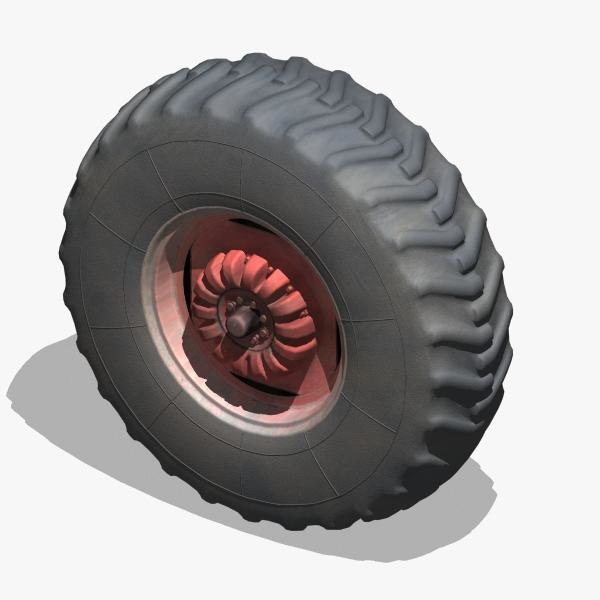
Ethylene Glycol: Ethylene Glycol antifreeze is the same kind that goes in your car’s radiator. It is a widely available, medium-priced solution that when mixed 50/50 with water, offers freeze projection down to -40F. And it weighs about the same per gallon as plain water. The main drawback is that it is very toxic to animals and actually attracts animals because it tastes sweet. So, if you get a leak in a tire, it’s not good news for critters.
Propylene Glycol: Propylene Glycol antifreeze has the same properties as ethylene glycol except that it is non-toxic. It is easy to get but expensive per gallon.
Windshield Washer Fluid: Windshield washer fluid is another popular ballast because of its wide availability and low cost per gallon. Used full strength in tires, it provides freeze protection down to -20F and weighs about the same per gallon as water. However, it is toxic to the environment, but at least it doesn’t attract animals.
Methanol: Methanol is medium-priced, but highly flammable and must be mixed with water to minimize risk of explosion or fire. It is also toxic, but it can provide freeze protection down to -15F.
Beet Juice: Beet Juice is very expensive, but very effective, with freeze protection down to -35F and weighs almost 11 lbs per gallon. As a plus, it is completely safe and biodegradable. RimGuard is the most well-known brand however, it’s only available through dealer networks and predominately in the northern parts of the US. I can’t get it in Georgia.
Polyurethane foam: Finally, there is Polyurethane foam, which is very expensive, but is freeze-proof and can provide up to 12 lbs of weight per gallon. As a bonus, it makes your tires flat-proof. It is available through dealer networks. One downside worth mentioning is that it also makes for a rough ride on the tractor since there is no cushion in the tire.
I chose windshield washer fluid because of it lower cost and availability.
In particular, I bought Super Tech Windshield washer and de-icer, available at WalMart. Well, sometimes. It seems to be seasonably available. I paid $2.17 per gallon for 60 gallons, which was the best price I could find at the time.
So how did I know how much fluid I needed? That’s where tire ballast fill charts come in. You can find many of them on line. I like the RimGuard tire fill chart.
The chart shows the most common sizes of tractor tires, the number of gallons they hold at a 75% fill level, and the number or pounds added when using RimGuard. My rear tires are 15-19.5 R4s, which hold 29 gallons each at a 75% fill level. So, I need 58 gallons total but I bought 60 gallon in case of an oopsy or two. To get the weight per tire for the ballast fluid of your choice, simply multiply the gallons per tire of your size tire by the pounds per gallon of your ballast fluid. So, in my case it is 29 x 8.3 which is about 240 pounds per tire, or a total ballast weight of 481 lbs.
Now let’s get on with filling the tires. Your tractor should be parked on a flat and level surface. The first step is to safely take the weight of the rear tires. Now you can do this one at a time, but I chose to jack both up at the same time and you’ll learn why later in this article. You just need to raise the tires barely off the floor or ground. My jack stands are rated for 6 ton each so no worries about them not holding the weight.
The tire valve stem needs to be at the 12 o’clock position to fill the tire with fluid. You’ll need a tire valve stem tool to remove the valve core – slowly.
To fill the tires, you will need an air/water adapter kit. You can find them on Amazon or stores like Tractor Supply, which is where I got mine. They cost around $10.
There are several methods for loading liquid ballast into tires. I cover the full details in the video, but here are the basics.
Gravity Fill: The simplest is using a short piece of hose and a 5 gallon bucket that you can put in the seat of your tractor.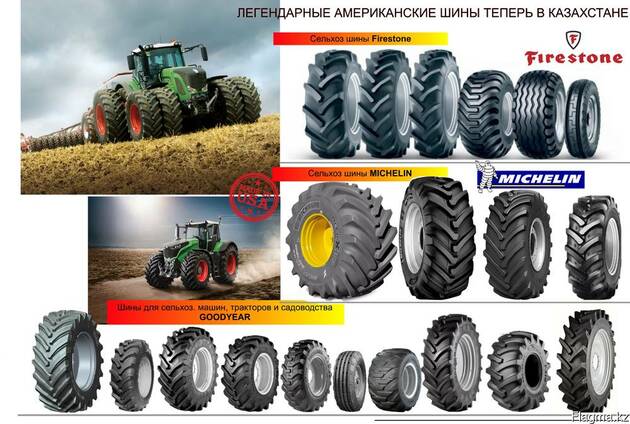 The hose is connected to the air/water adapter which is screwed tightly onto the valve stem. The other end of the hose sits at the bottom of the five gallon bucket and you start filling the bucket with the ballast fluid of your choice. Gravity does the work from here, but it can be slow going. Occasionally, push the air release button on the the air/water adapter to let the air escape and make more room for liquid.
The hose is connected to the air/water adapter which is screwed tightly onto the valve stem. The other end of the hose sits at the bottom of the five gallon bucket and you start filling the bucket with the ballast fluid of your choice. Gravity does the work from here, but it can be slow going. Occasionally, push the air release button on the the air/water adapter to let the air escape and make more room for liquid.
Transfer Pump: Another popular method is using a transfer pump to load the liquid ballast in the tires as shown in the pictures below. Transfer pumps with garden hose connections are available from many retailers such as Amazon, Harbor Freight and Northern Tool. I got mine from Amazon.
The pump speeds the process up and you just have to keep pouring liquid in the bucket and occasionally stopping the pump and releasing excess air from the tire. Note that transfer pumps are not supposed to be operated dry so priming it by filling the hose with liquid before turning it on is important!
Transfer Pump with Manifold: This method involves building a manifold that attaches to the air/water adapter and allows you to monitor the pressure and release air without wasting any fluid. It is made of 3/4″ PVC pipe and common fittings available at hardware store. This idea came from David Dobb on his DaveKnowsHow YouTube channel and I thought it was brilliant, as so many of his contraptions are. I built my version of the manifold so that the hoses hang straight down to minimize stress on the valve stem.
It is made of 3/4″ PVC pipe and common fittings available at hardware store. This idea came from David Dobb on his DaveKnowsHow YouTube channel and I thought it was brilliant, as so many of his contraptions are. I built my version of the manifold so that the hoses hang straight down to minimize stress on the valve stem.
Here’s a closer look at the parts of the manifold. I use three, ¾” threaded PVC to garden hose adapters. Two garden hose valves. And a typical pressure gauge on the inlet side. Since this manifold is hopefully a one-time use device, I chose parts I could reuse elsewhere. In fact, the pressure gauge ended up replacing the one on our pool pump. I’ll keep the manifold body in case I ever have to fill tires again.
The hose connecting the manifold to the pump output side is a washing machine connector hose with female connections on both ends. The other two hoses can be whatever as long as they have a female connection on one end.
Before starting the pump, I fill the 5-gallon bucket with fluid and the prime the inlet hose.
The tire pressure quickly settled out at 20 PSI, which is perfect!
With the pump running, it was just a matter of keeping the 5 gallon bucket filled with fluid.
Note that the tires fill faster if you occasionally stop the pump, close the manifold inlet valve, then fully open the outlet valve to let excess air pressure out. You might want to pull the return hose out from the liquid as you do this so as to avoid blasting ballast fluid everywhere. Go ahead, ask me how I know this. Once the pressure is relieved, open the inlet valve, turn on the pump, and mostly close the outlet valve.
Once all the fluid is in, I can put the valve core back in the stem and pressurize the tire to about 20 psi, which is all that is needed for liquid filled tires.
So now the process needs to be repeated for the other tire. Again, the valve stem needs to be in the 12 o’clock position, but because I jacked up both rear tires, I can easily do this without moving the tractor. With the clutch locked in the pressed position and the range selector in neutral, I manually rotate the tire so that the valve stem is at 12 o’clock.
With the clutch locked in the pressed position and the range selector in neutral, I manually rotate the tire so that the valve stem is at 12 o’clock.
After filling the tire, I once again reinstall the valve core and pressurize the tire. Now I can safely take the tractor off the jack stands.
I must admit I put off this project because I was intimidated by it, but it turns out to be pretty easy to do if you are careful and have the right tools on hand. So if I can do it, you can do it!
Note: Links to Amazon products are Amazon Associate links that won’t cost you any extra, but will help support my efforts with a small commission on qualified products. Thanks for your support!
Like Loading...
Since the day tractor manufacturers moved from steel wheel traction to tire on wheel configurations, farmers have added tractor tire fluids to their equipment to add traction weight, counterbalance and to lower their center of gravity to reduce the possibility of tipping.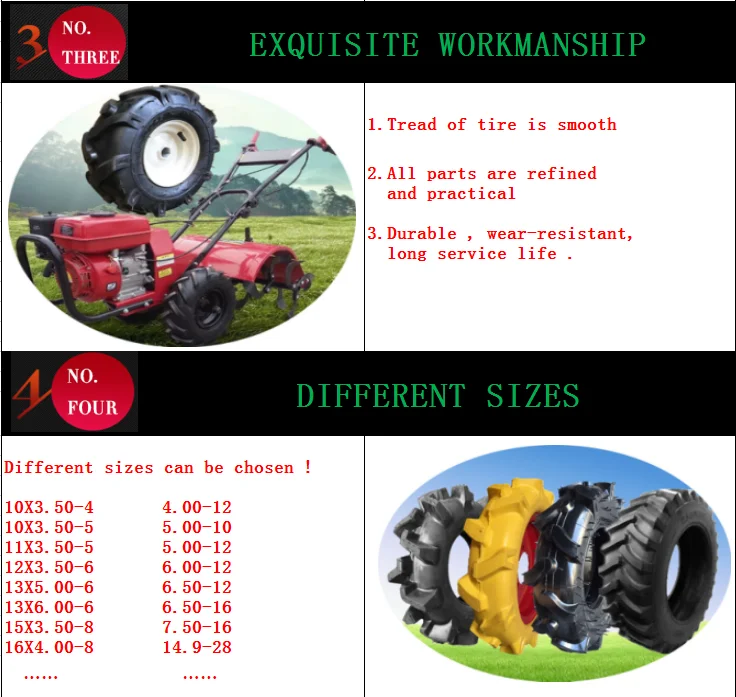 (Ed Note: Tractor ROPS come standard with most machines these days, but the goal is to avoid using them.) Years of trial and error has changed the material offerings and methods, but not by much.
(Ed Note: Tractor ROPS come standard with most machines these days, but the goal is to avoid using them.) Years of trial and error has changed the material offerings and methods, but not by much.
Do you have good tires but still have a hard time gaining traction on loose or wet surfaces? Adding downforce with tractor tire fluid can assist in gaining traction on slippery surfaces. Some 4×4 tractors have a high center of gravity thanks to their tall tires and axle clearance and adding ballast to your tires can help lower that center of gravity, an important consideration if you’re operating on a grade.
Many of the best small farm tractors come with bucket loaders now, which are exceedingly useful around the farm and homestead. That’s something you’ll want to add to your list of farm tools and equipment when you’re considering what tractor and machinery to purchase. Many people quickly find the maximum weight they can lift and for those of us who have been there, you know that unnerving feeling of your rear tires lifting off the ground, adding ballast to your rear tires, or aft of your rear axle, will help overcome this problem and make your tractor safer to operate. If you use the 3-point hitch of your tractor to pull implements like a plow, and you find it hard to steer or the implement’s weight is pulling the nose of the tractor up, then loading the front tires will weigh your nose back down.
If you use the 3-point hitch of your tractor to pull implements like a plow, and you find it hard to steer or the implement’s weight is pulling the nose of the tractor up, then loading the front tires will weigh your nose back down.
Adding tractor tire fluids to tires can negatively impact your tractor’s ride quality, especially when loading the rear tires, according to John Deere. In a Deere service recommendation sheet for tire loading, they suggest a preferred 40% volume fill for liquid ballast, but the long-standing tradition of tire loading is 75% fill, which is the maximum John Deere suggests. If you drive in high gear along roadways at or near top speed, the already harsh ride may get worse, but at low speeds, you are not likely to see a difference in the ride of your tractor. The old Oliver-White tractor we used to have on the farm came loaded with calcium chloride at 75%, and I felt no significant difference when we upgraded to our John Deere 5105 with no tire ballast, so I personally have no concern about affecting the “ride quality” of our tractor.
Farmers will always be a breed of their own, but rest assured they will find the cheapest and/or most rugged way to achieve something, and tractor tire fluids are no exception. Some common materials include water, calcium chloride, antifreeze, windshield washer fluid, beet juice and polyurethane foam.
When you need a tractor with great stability and a smooth ride, trust Bobby Ford Tractor and Equipment to offer a complete line of Kubota tractors built to work with any terrain. Contact us today for a quote on your next tractor.
Water
It’s cheap and easy, but it freezes. This is a deal breaker for a lot of people since blocks of ice make it feel like you have a flat in your tread, and when ice expands it can push the tire off the rim. If you live in the deep south, then maybe you can get away with it, but here in New England, it’s a big no-can-do.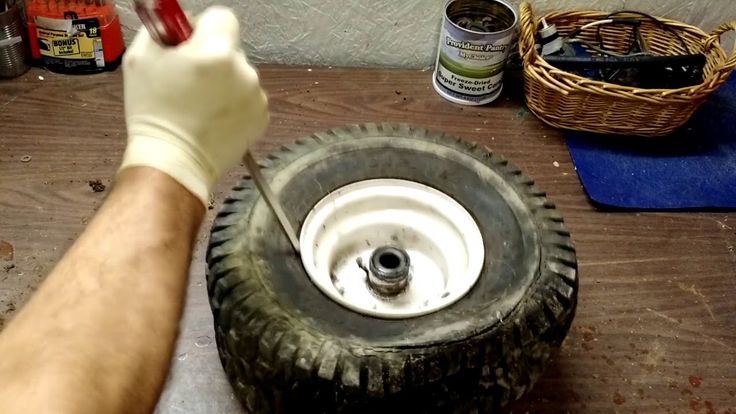
Calcium Chloride
Calcium chloride is usually sold in a flake form. You mix it into water and the solution resists freezing down to around -50°F. Calcium chloride was the go-to fluid for ages, but it’s notorious for rusting wheels into oblivion. Obtaining the raw material can be an affordable venture, but replacing the wheels down the road will not be, however, there are people who still use it because it can be cheap and the solution weighs around 40% more than plain water. I don’t personally suggest calcium chloride, but it is an option.
Antifreeze
If I was to load the tires of our John Deere, I would likely use this method. Antifreeze is easy to come by, albeit not all that cheaply. Ethylene Glycol is toxic, so regardless of the cost savings over Propylene Glycol, I would not use it. It takes very little Ethylene Glycol to kill a dog and honestly, I love my dog too much to take that chance. On that note, Propylene Glycol will work for the application, is nontoxic and is commonly marketed as pet safe. Propylene Glycol is also used by veterinarians as a bypass sugar, administering it to ruminant animals such as cattle to perk them up. Automotive antifreeze resists freezing down to around -40F and adds no weight to the water you’ll be adding it to (which is 8 pounds per gallon).
Propylene Glycol is also used by veterinarians as a bypass sugar, administering it to ruminant animals such as cattle to perk them up. Automotive antifreeze resists freezing down to around -40F and adds no weight to the water you’ll be adding it to (which is 8 pounds per gallon).
Windshield Washer Fluid
As I said, farmers will always find a cheaper, better or stronger way of doing things, and this is a perfect example. Automotive windshield wash fluid typically resists freezing down to -20°F, or -32°F for the winter blend, is easy to find and cheap to buy. Windshield washer fluid still only weighs 8 pounds per gallon, but hey, at least the insides of your tire and wheel will stay clean and streak free!
Both windshield washer fluid and automotive antifreeze are easy to come by. Shop your local auto parts stores and gas stations for the best price.Beet Juice
A fairly new product to the tractor tire fluid arena is a product sold under the name of Rim Guard.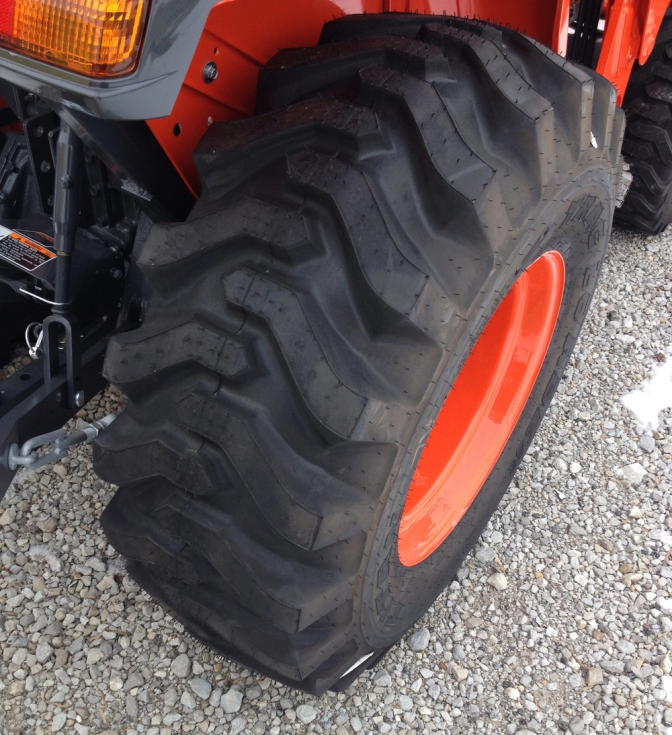 Rim Guard’s main ingredient is beet juice of all things and boasts a lot of positive points. The real selling points of beet juice are; it’s non-toxic, it’s 30% heavier than water, it resists freezing down to -35°F and the real kicker is that it’s noncorrosive, so it won’t eat your wheels for dinner like calcium chloride will. But as with everything, there is a flip side to Rim Guard, and that’s the price. Rim Guard can be a rather expensive product, especially if you’re filling a large tire. If you can afford the expense, this may be your best option by far.
Rim Guard’s main ingredient is beet juice of all things and boasts a lot of positive points. The real selling points of beet juice are; it’s non-toxic, it’s 30% heavier than water, it resists freezing down to -35°F and the real kicker is that it’s noncorrosive, so it won’t eat your wheels for dinner like calcium chloride will. But as with everything, there is a flip side to Rim Guard, and that’s the price. Rim Guard can be a rather expensive product, especially if you’re filling a large tire. If you can afford the expense, this may be your best option by far.
Polyurethane Foam
Foam filling your tractor tires is a viable proposal, but an expensive one with some aggravating downfalls. Foam filling weighs up to 50% more than water per volume and offers you a no-flat tire that is sure to affect the “ride quality” of your tractor. There are plenty of YouTube videos of homebrew DIY methods of foaming tires, but if you’re serious about loading a tractor tire, I highly suggest going to a dealership and having it professionally done.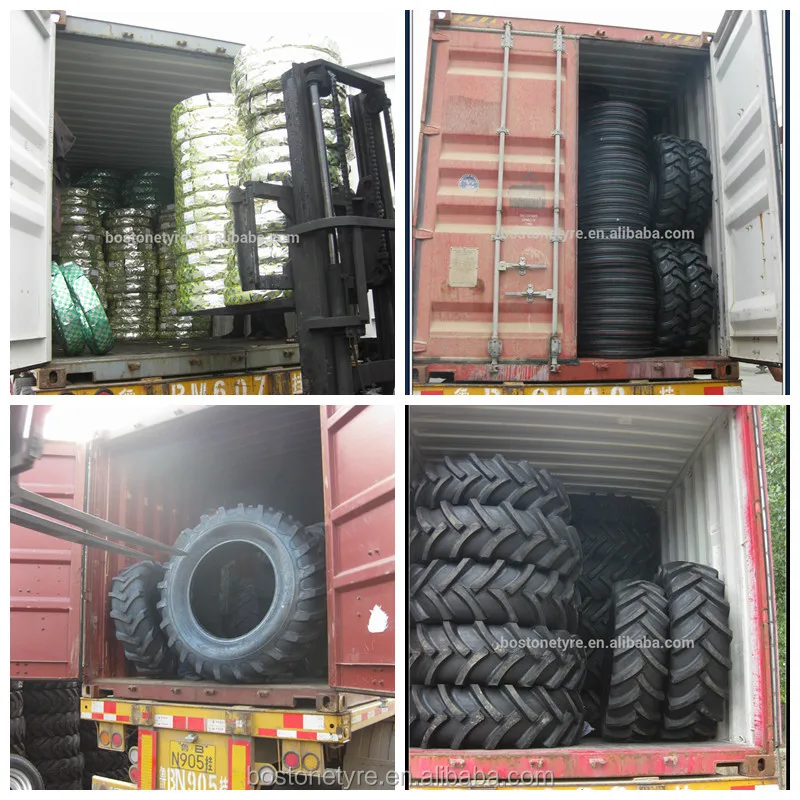 You will have to cut the tire off the wheel or buy new wheels when you want to change tires, so be sure to foam new or almost new tires so you get the longest tread life. Foaming your tires also means you can not adjust tire pressures or tire footprint, but by the same token, you never have to check your tire pressure, so it’s really a catch 22 situation.
You will have to cut the tire off the wheel or buy new wheels when you want to change tires, so be sure to foam new or almost new tires so you get the longest tread life. Foaming your tires also means you can not adjust tire pressures or tire footprint, but by the same token, you never have to check your tire pressure, so it’s really a catch 22 situation.
Support your axle to take the weight of the machine off the tires, deflate them and remove the valve core in the tire stem. There are plenty of devices and methods for loading tractor tire fluids, but the easiest would be using a filling device, a drum of fluid in the bucket of the tractor, a hose between the two and then raising the bucket, relying on gravity to do the work for you. If you want to fill to John Deere’s recommended 40%, rotate the tire stem to the 4 o’clock or 8 o’clock position and fill to the stem. If you want to fill to the industry standard of 75%, place the stem at 12 o’clock and fill to the stem.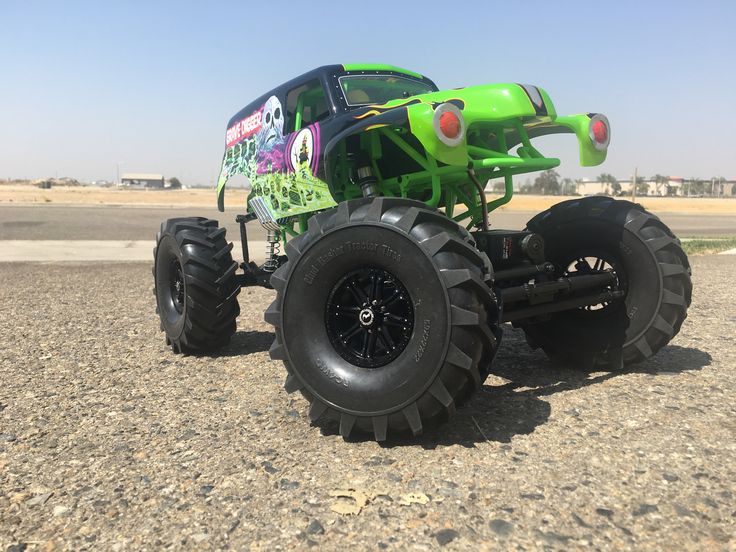 Rim Guard has a handy tire size chart that shows you how many gallons to put in your tire, just remember that the chart shows the weight of their product so calculate whichever product you use based on pounds per gallon.
Rim Guard has a handy tire size chart that shows you how many gallons to put in your tire, just remember that the chart shows the weight of their product so calculate whichever product you use based on pounds per gallon.
Do you use tractor tire fluids to add ballast? If so, what’s your favorite fluid to use and why?
######
About Bobby Ford Kubota, Texas:
If you’re in need of a reliable, well-balanced machine to help support your operation, Bobby Ford Tractor and Equipment has you covered. Bobby Ford is an authorized Texas Kubota Dealer serving contractors, landscapers, road crews, farmers, ranchers and others throughout Texas.
Their selection of Kubota tractors includes compact, sub-compact, utility, economy-utility, tractor/loader/backhoe, and specialty models. Bobby Ford has great deals on Kubota tractors that offer a variety of special financing, customer rebates, and more. Contact their team today for a quote!
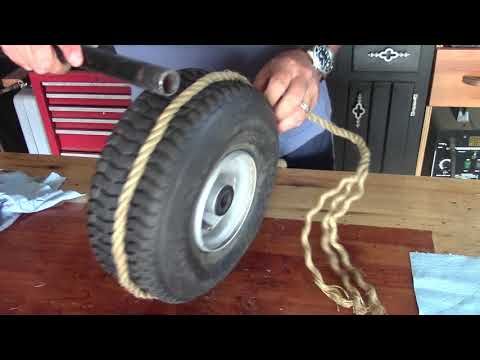 ua
ua Water or water-based solutions are used to increase weight and this procedure is called ballasting.
Ballasting is an economical way to increase the traction and ultimately the drawbar pull of your tractor. Less "grinding" of the rear wheels reduces fuel consumption, and the tractor will also be able to pull larger and heavier implements.
Liquid ballasting a tire has the same effect as a metal weight - it places the liquid ballast at the lowest center of gravity on the tractor. While the tractor is moving, the weight of the ballast fluid is kept at the bottom of the tire under all circumstances. The operator will definitely notice a noticeable improvement in the handling characteristics of the tractor. The tractor has more weight, so it has more inertia when moving and is more likely to pass the bumps in its path without problems.
There are various liquid fillers such as water, beetroot juice, antifreeze or calcium chloride, each with its own advantages and disadvantages.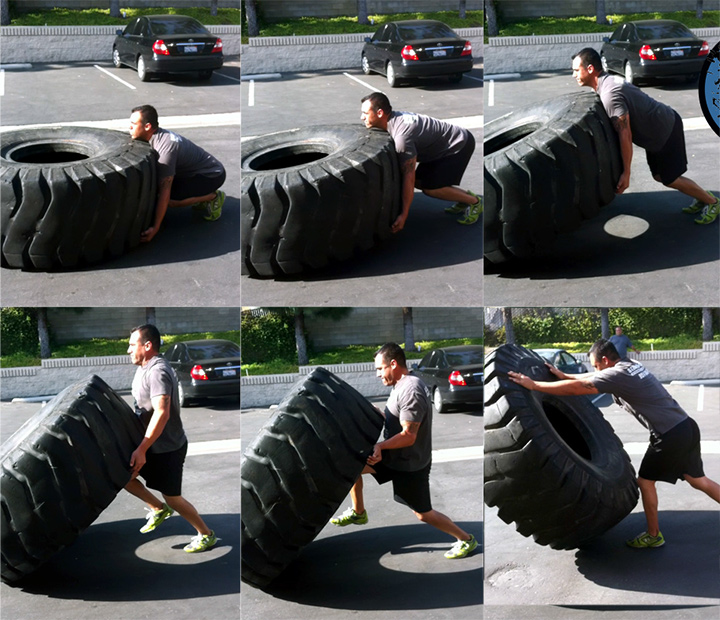 If the temperature in your area does not drop below zero, then you will probably be fine with simple ballast water.
If the temperature in your area does not drop below zero, then you will probably be fine with simple ballast water.

 Connect one end of the hose to a water source, then attach it to the wheel by turning counterclockwise until the twisting process is too tight.
Connect one end of the hose to a water source, then attach it to the wheel by turning counterclockwise until the twisting process is too tight. Most often, fluids filled into the wheels are in them throughout the entire life of the tires. It is important to know that these fluids are not part of the wheel balancing process and are only used on tractors.
Share:
Posted in Articles and Agricultural Equipment
Related News
Categories
Latest News
Years ago, American farmers discovered that adding weight to a tractor greatly improved the driving performance of a tractor.
One of the benefits is improved grip. When a tractor pulls a heavy plow or disc in viscous arable land, the drive wheels usually lack traction and skid.
Additional ballast increases the inertia of the tractor, smoothes out jerks and saves expensive equipment.
The load distribution along the axles is as follows: conventional tractors - 25% on the front axle and 75% on the rear. Mechanical front-wheel drive tractors - 40% on the front axle and 60% on the rear. Tractors with four-wheel drive - 55% on the front axle, and 45% on the rear.
By adding extra weight to the rear axle, the tires can pull more weight without losing traction. Usually, the driving tires of the tractor are filled, which improves the traction characteristics, the ribs of the tire are better hooked on hard ground.
To ensure longitudinal stability, additional weights are used and water is poured into the tires of the guide (front) wheels of the tractor. It is preferable to hang removable cast-iron weights, but water is more economical.
Normal water can be used, but it freezes in the cold. Antifreezes based on ethylene glycols and alcohol are also used, but such liquids are too expensive. Successfully used calcium chloride, obtained in powder and mixed with water (30% by volume) before refueling. Its disadvantage is the likelihood of corrosion, so it is recommended to pour it into the tractor tube tire.
Even inexpensive glass washer fluid is sometimes used. In extreme cases, plain water with salt is poured.
Tractor tire fluid also improves heat transfer and more evenly distributes excess heat generated in the tire during heavy use.
On older tractors, it was recommended to refuel only the outer tires of the tractor's dual wheel, on modern tractors it is recommended to evenly distribute the mass of liquid on both wheels. It is not recommended to fill radial tires more than 40%.
For more precise information on axle load distribution, please contact the tractor manufacturer or dealer.
Ballasted anti-freeze liquid usually remains in the tractor wheel for the entire life of the tire. The fluid in the tire has nothing to do with wheel balancing and is used only on tractor equipment.
The weight table is based on the assumption that 75% of the tire volume will be filled with water (by valve level). The use of anti-freeze chemicals can affect the mass of the liquid.
Tires for agricultural tractors (arable land)
| Tire size | Water, liters | Additional weight per tire, kg |
|---|---|---|
| 4.00-12 | 9 | 37.4 |
| 4.00-15 | eleven | 46.2 |
| 4.00-19 | fourteen | 55 |
| 5.00-15 | 15.9 | 63.8 |
| 5.50-16 | 23 | 92.4 |
6.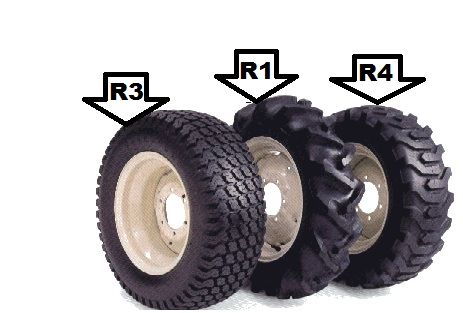 00-12 00-12 | 20.45 | 81.4 |
| 6.00-14 | 23 | 90.2 |
| 6.00-16 | 27 | 110 |
| 6.50-16 | 32 | 127.6 |
| 7.50-10 | 27 | 110 |
| 7.5L-15 | 36 | 145.2 |
| 7.50-16 | 41 | 165 |
| 7.50-18 | 45 | 182.6 |
| 7.50-20 | fifty | 202.4 |
| 9.00-10 | 41 | 165 |
| 9.5L-15 | fifty | 202.4 |
| 9.50-20 | 82 | 330 |
| 9.50-24 | 91 | 367.4 |
| 10.00-16 | 77 | 312.4 |
11.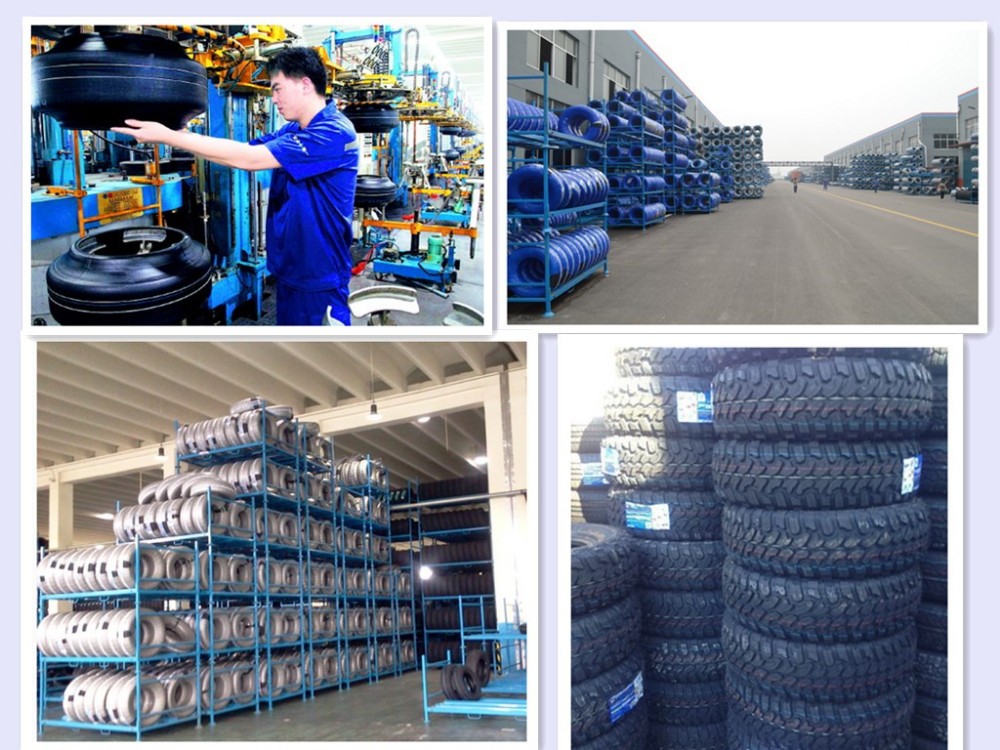 00-12 00-12 | 82 | 330 |
| 11L-15 | 59 | 237.6 |
| 11.00-16 | 105 | 422.4 |
| 11L-16 | 68 | 270.6 |
| 14L-16.1 | 123 | 495 |
| 16.5L-16.1 | 191 | 761.2 |
| 7.2-24 | 41 | 165 |
| 7.50-16 | 41 | 165 |
| 8.3-24 | 59 | 237.6 |
| 9.5-16 | 55 | 220 |
| 9.5-24 | 77 | 312.4 |
| 9.5-36 | 114 | 459.8 |
| 9.5-42 | 132 | 532.4 |
| 10-16.5 | 55 | 213.4 |
11. 2-24 2-24 | 109 | 440 |
| 11.2-28 | 123 | 495 |
| 11.2-34 | 150 | 605 |
| 11.2-36 | 159 | 642.4 |
| 11.2-38 | 164 | 660 |
| 12.4-16 | 95 | 385 |
| 12.4-24 | 136 | 550 |
| 12.4-28 | 159 | 642.4 |
| 12.4-36 | 200 | 807.4 |
| 12.4-38 | 209 | 844.8 |
| 12.4-42 | 232 | 935 |
| 13.6-24 | 173 | 697.4 |
| 13.6-26 | 182 | 734.8 |
| 13.6-28 | 195 | 789.8 |
13. 6-38 6-38 | 259 | 1045 |
| 14.9-24 | 214 | 862.4 |
| 14.9-26 | 218 | 880 |
| 14.9-28 | 241 | 972.4 |
| 14.9-30 | 259 | 1045 |
| 14.9-36 | 291 | 1174.8 |
| 14.9-38 | 305 | 1229.8 |
| 15.5-38 | 300 | 1210 |
| 16.9-24 | 277 | 1119.8 |
| 16.9-26 | 295 | 1192.4 |
| 16.9-28 | 314 | 1265 |
| 16.9-30 | 332 | 1339.8 |
| 16.9-34 | 373 | 1504.8 |
| 16.9-38 | 409 | 1652.2 |
17. 5L-24 5L-24 | 250 | 1009.8 |
| 18.4-16.1 | 223 | 899.8 |
| 18.4-24 | 341 | 1377.2 |
| 18.4-26 | 359 | 1449.8 |
| 18.4-28 | 382 | 1542.2 |
| 18.4-30 | 405 | 1632.4 |
| 18.4-34 | 455 | 1834.8 |
| 18.4-38 | 500 | 2017.4 |
| 19.5L-24 | 332 | 1339.8 |
| 20.8-34 | 582 | 2349.6 |
| 20.8-38 | 636 | 2569.6 |
Turf tires
| Tire size | Water, liters | Additional weight per tire, kg |
|---|---|---|
23×8. 50-12 50-12 | 27.3 | 110 |
| 23×10.50-12 | 31.8 | 127.6 |
| 26×12.00-12 | 45.5 | 182.6 |
| 25×8.50-14 | 31.8 | 127.6 |
| 25×7.50-15 | 27.3 | 110 |
| 25×10.50-15 | 31.8 | 127.6 |
| 25×12.50-15 | 36.4 | 147.4 |
| 27×8.50-15 | 31.8 | 127.6 |
| 27×9.50-15 | 40.9 | 165 |
| 27×10.50-15 | 45.5 | 182.6 |
| 29×12.50-15 | 63.6 | 255.2 |
| 31×12.50-15 | 81.8 | 327.8 |
| 31×13.50-15 | 86.4 | 347.6 |
31×15. |